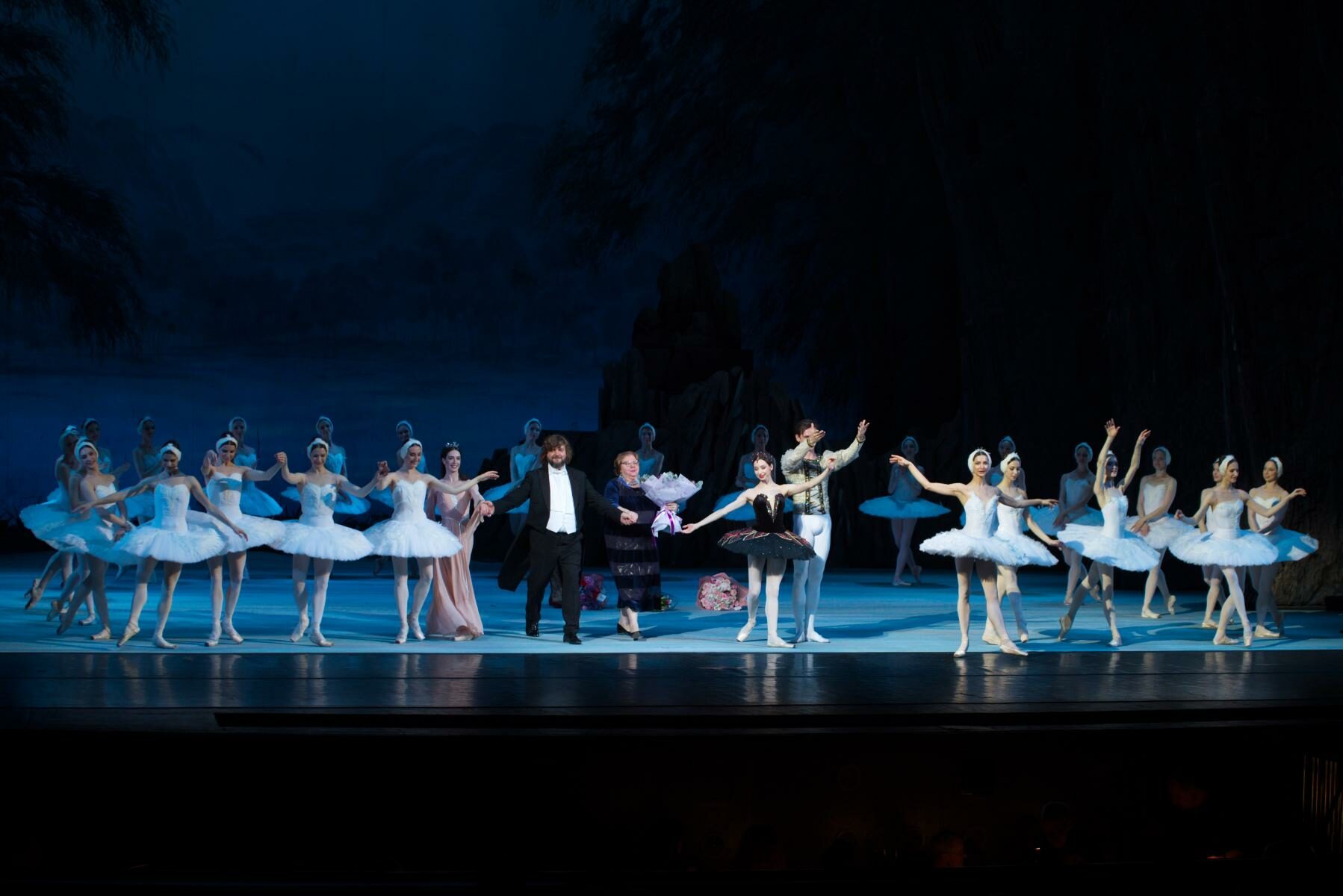“Ekman / Goecke / Naharin”
Ballet of the Stanislavsky and Nemirovich-Danchenko Moscow Music Theatre
Stanislavsky and Nemirovich-Danchenko Moscow Music Theatre
Moscow, Russia
March 23, 2019
by Ilona Landgraf
Copyright © 2019 by Ilona Landgraf
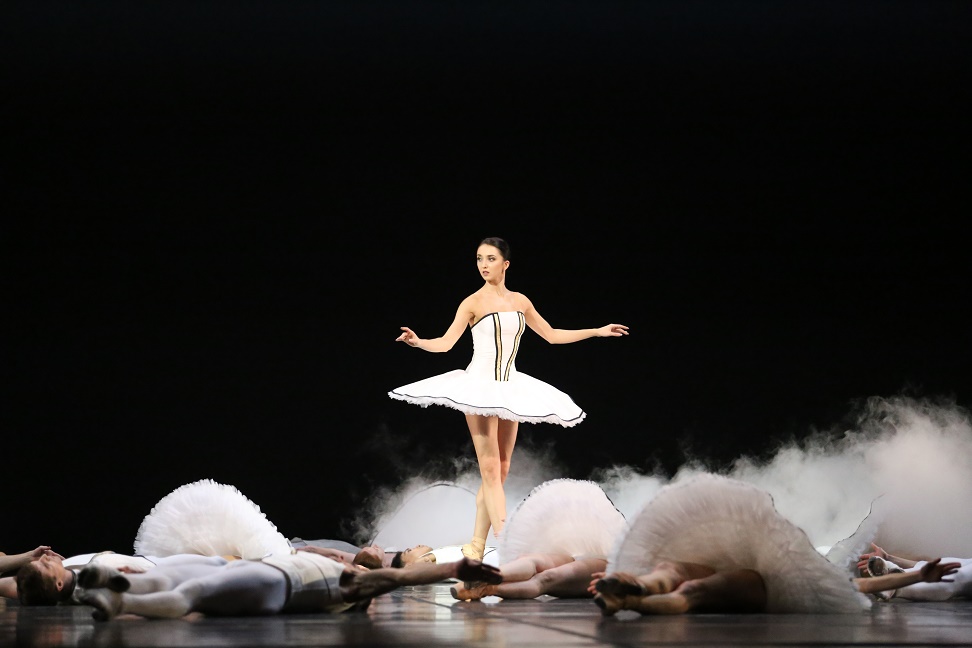 No fewer than three pieces of the Stanislavsky Ballet’s repertoire were nominated for this year’s Golden Mask award: “Tyll” by Alexander Ekman, “Lonesome George” by Marco Goecke, and “Minus 16” by Ohad Naharin. On top of that, the company’s senior principal, Oksana Kardash, is nominated twice for her performances in “Tyll” and “Lonesome George”.
No fewer than three pieces of the Stanislavsky Ballet’s repertoire were nominated for this year’s Golden Mask award: “Tyll” by Alexander Ekman, “Lonesome George” by Marco Goecke, and “Minus 16” by Ohad Naharin. On top of that, the company’s senior principal, Oksana Kardash, is nominated twice for her performances in “Tyll” and “Lonesome George”.
The Golden Mask Festival is in full swing in Moscow, presenting the most significant productions of all genres of theater from all over Russia. The winners will be announced on April 16 at an awards ceremony in the Bolshoi Theatre.
If you had to choose, which of the three pieces would be your favorite?
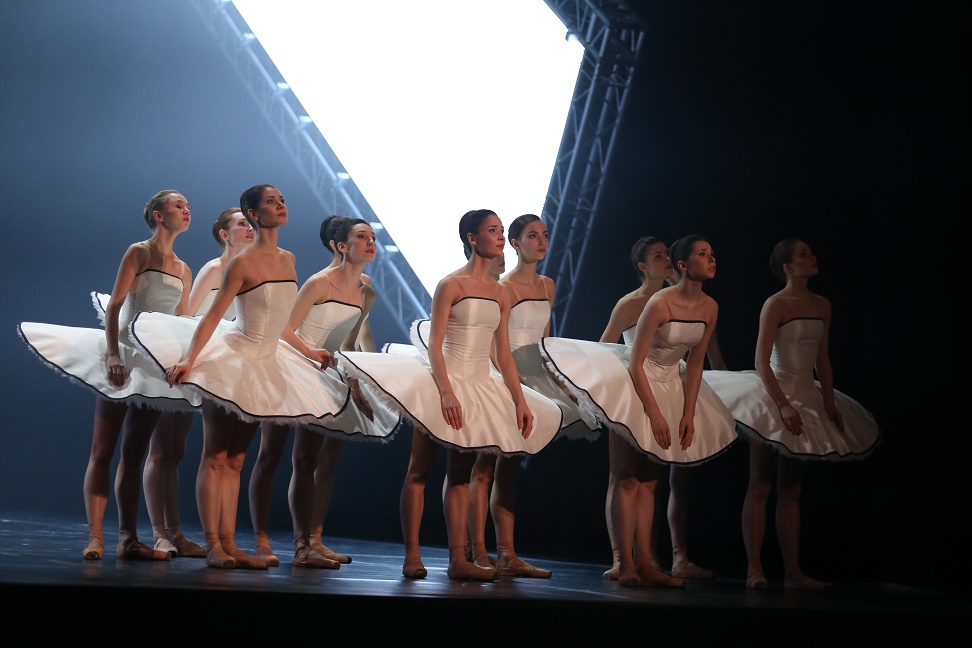 “Tyll”, created for the Royal Swedish Ballet in 2012, was Ekman’s first foray into the classical dance vocabulary and his first use of pointe shoes. Tyll is the Swedish word for tulle, and so tutus – white ones – are strongly featured as well. What is ballet? Where does it come from? These are the initial questions that Ekman attempts to explore with a heaping scoop of spoof and jibe. The piece opens at what might be the beginning of a rehearsal. The dancers, all wearing pristine white (the costumes are by Bregje van Balen), warm up by gyrating their arms and performing series of nonchalant port de bras. They jog, shake out their legs, and traipse about, their heels hitting the floor. A sexy ballet mistress in a black mini-skirt (Anastasia Pershenkova) slinks across the stage. Scratchy pre-recorded commentary (maybe excerpted from the early days of radio recording?) accompany the exercises, punctuated by intense
“Tyll”, created for the Royal Swedish Ballet in 2012, was Ekman’s first foray into the classical dance vocabulary and his first use of pointe shoes. Tyll is the Swedish word for tulle, and so tutus – white ones – are strongly featured as well. What is ballet? Where does it come from? These are the initial questions that Ekman attempts to explore with a heaping scoop of spoof and jibe. The piece opens at what might be the beginning of a rehearsal. The dancers, all wearing pristine white (the costumes are by Bregje van Balen), warm up by gyrating their arms and performing series of nonchalant port de bras. They jog, shake out their legs, and traipse about, their heels hitting the floor. A sexy ballet mistress in a black mini-skirt (Anastasia Pershenkova) slinks across the stage. Scratchy pre-recorded commentary (maybe excerpted from the early days of radio recording?) accompany the exercises, punctuated by intense 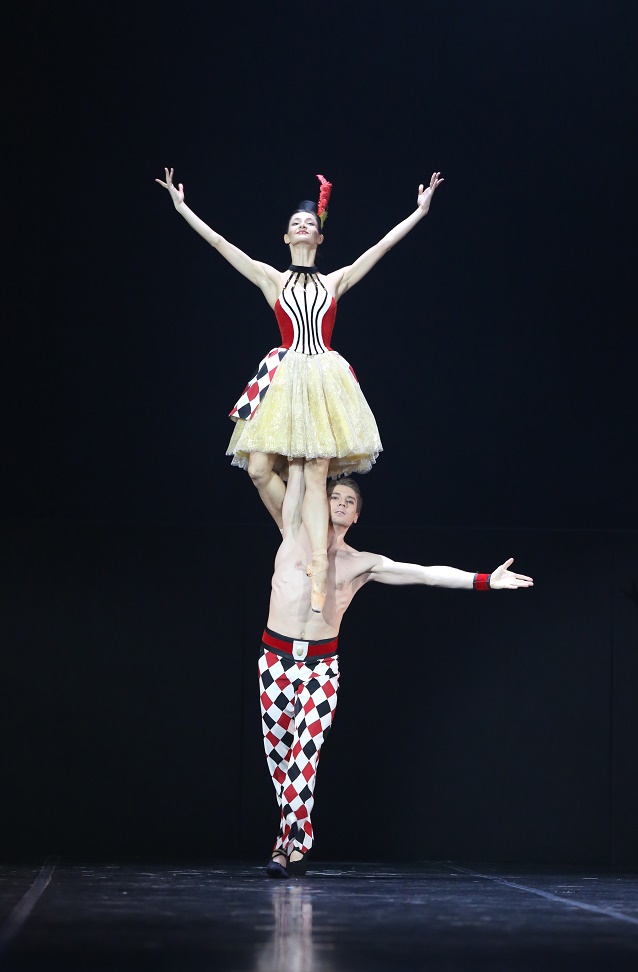 rhythmic breathing and the tok-tok of pointe shoes, amplified to a threatening level (the music is by Mikael Karlsson). In a moment of huddled stillness, the women hum the tune of “Swan Lake” and stare towards the audience – until suddenly stamping their feet on the floor as if trampling an insect to death. A recorded voice commands the dancers to take basic ballet positions, explaining that these are the ABCs of ballet. A couple in historic dress demonstrates several courtly dance moves; people pass by, taking snap-shots as the speaker lectures about the history of ballet. Spurred on by other dancers, a circus couple (Elena Solomyanko and Dmitry Sobolevsky) shines in the pyrotechnics of turning, leaping, and performing daring acrobatics. Shortly thereafter, three couples (Natalia Kleimenova & Georgi Smilevski, Oksana Kardash & Denis Dmitriev, and Ksenia Shevtsova & Ivan Mikhalev) enter into sequences of serious classical dance, framed by a bustling corps and accompanied by a technological thumping. Classical dance doesn’t seem to be Ekman’s métier, and soon the group dynamic flattens into everyday, predictable dancing patterns. At the end of the piece, the dancers lie on their backs and practice their vigorous port de bras breathing as the ballet mistress slinks by once more.
rhythmic breathing and the tok-tok of pointe shoes, amplified to a threatening level (the music is by Mikael Karlsson). In a moment of huddled stillness, the women hum the tune of “Swan Lake” and stare towards the audience – until suddenly stamping their feet on the floor as if trampling an insect to death. A recorded voice commands the dancers to take basic ballet positions, explaining that these are the ABCs of ballet. A couple in historic dress demonstrates several courtly dance moves; people pass by, taking snap-shots as the speaker lectures about the history of ballet. Spurred on by other dancers, a circus couple (Elena Solomyanko and Dmitry Sobolevsky) shines in the pyrotechnics of turning, leaping, and performing daring acrobatics. Shortly thereafter, three couples (Natalia Kleimenova & Georgi Smilevski, Oksana Kardash & Denis Dmitriev, and Ksenia Shevtsova & Ivan Mikhalev) enter into sequences of serious classical dance, framed by a bustling corps and accompanied by a technological thumping. Classical dance doesn’t seem to be Ekman’s métier, and soon the group dynamic flattens into everyday, predictable dancing patterns. At the end of the piece, the dancers lie on their backs and practice their vigorous port de bras breathing as the ballet mistress slinks by once more.
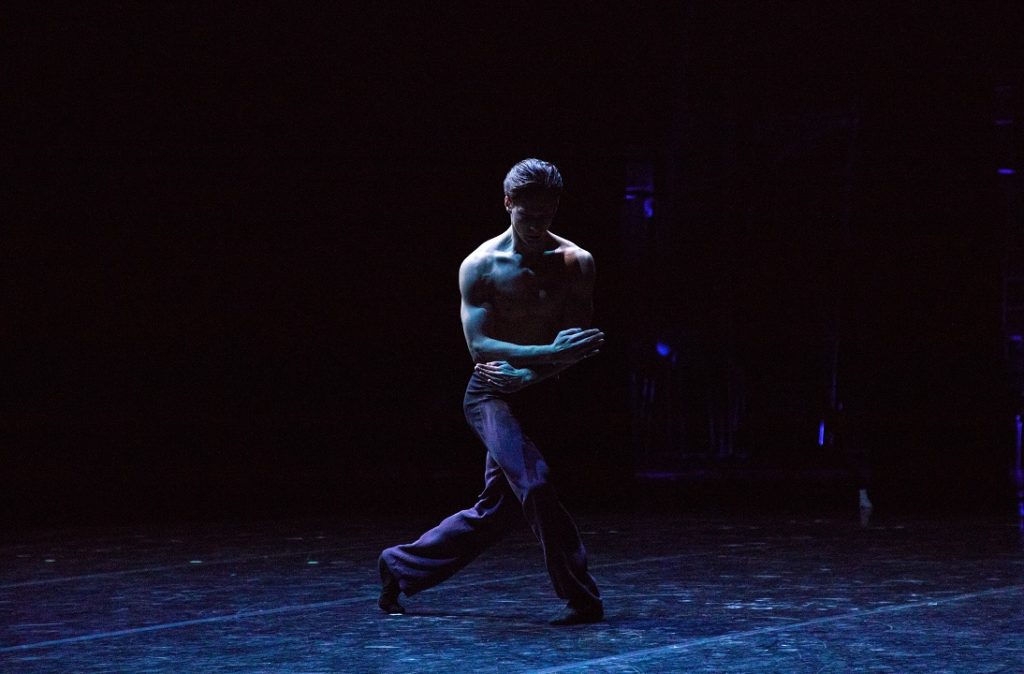
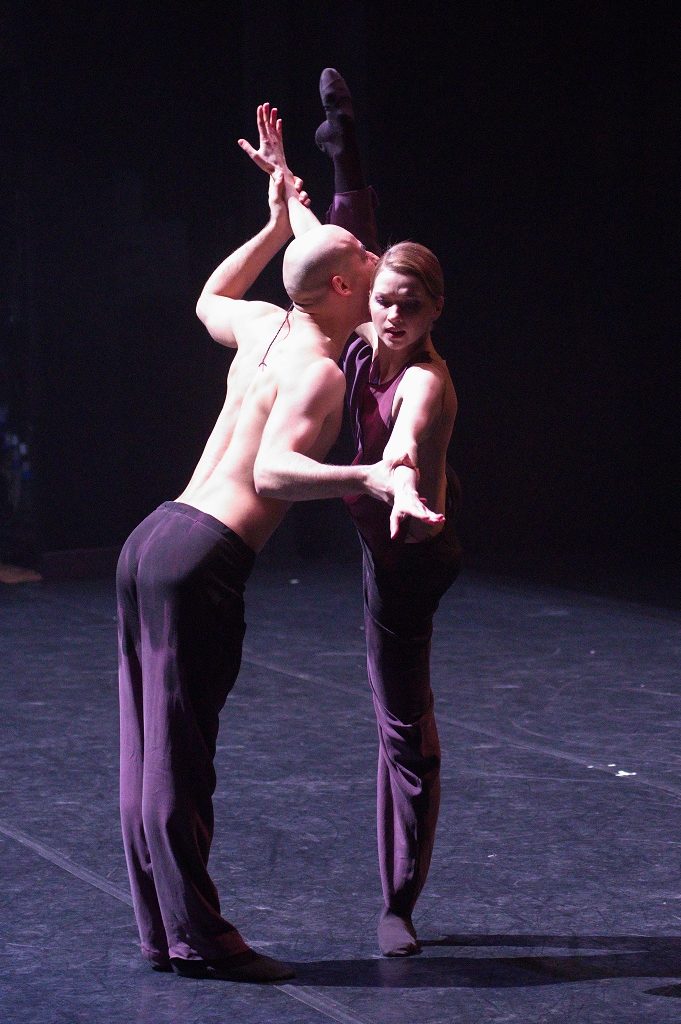 Goecke’s “Lonesome George” is titled after the one-hundred-plus-years-old Galápagos giant tortoise that died in 2012 – presumably as the last of its species. The piece premiered with the Ballett am Rhein in Düsseldorf in 2015. Besides its gloomy atmosphere and the forlorn, despondent impression left by the dancers, the piece makes no references to the extinction of a species. Goecke is relatively new to Russian audiences, but having seen some more of his pieces, I agree with what dance critic Laura Cappelle wrote in her review of another of Goecke’s pieces in the March issue of Dancing Times: “the novelty of Goecke’s style has worn off (…)” She’s also right in discerning that “he seems to respond to all scores with the same, frenetic, unsubtle upper-body twitching”.
Goecke’s “Lonesome George” is titled after the one-hundred-plus-years-old Galápagos giant tortoise that died in 2012 – presumably as the last of its species. The piece premiered with the Ballett am Rhein in Düsseldorf in 2015. Besides its gloomy atmosphere and the forlorn, despondent impression left by the dancers, the piece makes no references to the extinction of a species. Goecke is relatively new to Russian audiences, but having seen some more of his pieces, I agree with what dance critic Laura Cappelle wrote in her review of another of Goecke’s pieces in the March issue of Dancing Times: “the novelty of Goecke’s style has worn off (…)” She’s also right in discerning that “he seems to respond to all scores with the same, frenetic, unsubtle upper-body twitching”.
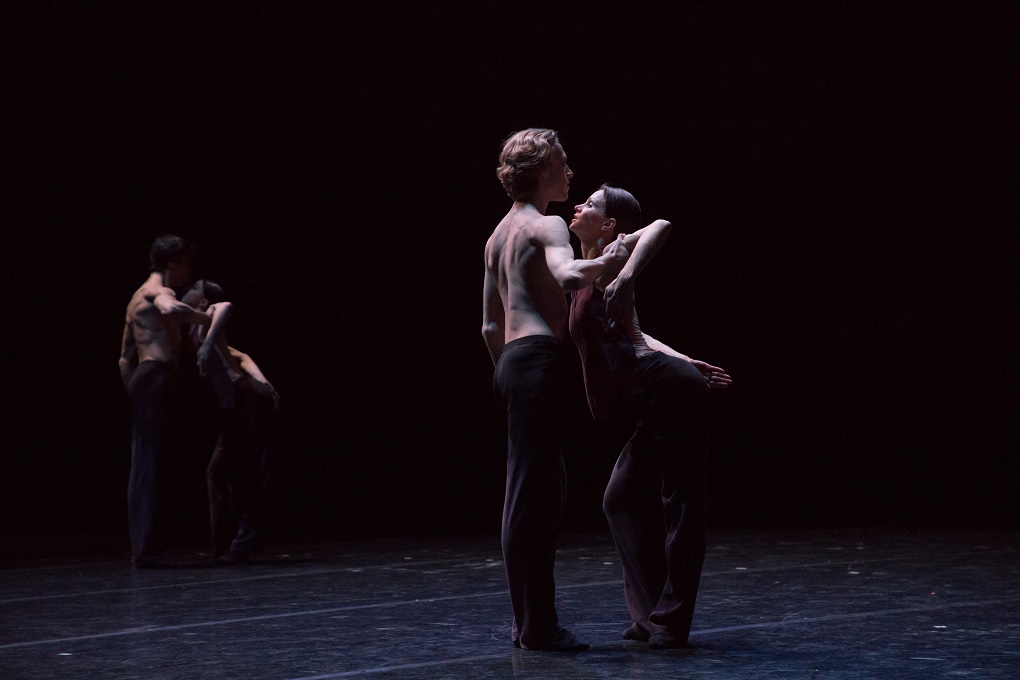 This iteration of the ballet was accompanied by Shostakovitch’s String Quartet No. 8 arranged for chamber orchestra. It was played by the orchestra of the Stanislavsky and Nemirovich-Danchenko Music Theatre under the baton of Roman Kaloshin.
This iteration of the ballet was accompanied by Shostakovitch’s String Quartet No. 8 arranged for chamber orchestra. It was played by the orchestra of the Stanislavsky and Nemirovich-Danchenko Music Theatre under the baton of Roman Kaloshin.
As usual, the dancers – five women and six men – performed convulsive, jerky movements at a frantic pace, their bodies warped with tension. They reminded me of doomed creatures scurrying across the stage, weighed down by a burden of irresolvable loneliness. As in other pieces, the dancers hissed and exhaled until they wheezed, occasionally calling out hoarsely for the titular “George”.
The sets and costumes in Goecke’s pieces are typically designed by Michaela Springer and rarely vary. The stage is dark and dancers appear from or are swallowed by its foggy nowhere. Dancers of both sexes wear dark pants; the men have bare chests that reveal strained muscles, while the women wear simple tops. Sometimes minimalistic elements – like a toy rat (“Deer Vision”), a huge pink feather fan (“Fancy Goods”), or a shower of water (“Le Chant du Rossignol”) – surprise the eye. In this production, a curtain of silver lace drops down from the flies, marking the work’s climax.
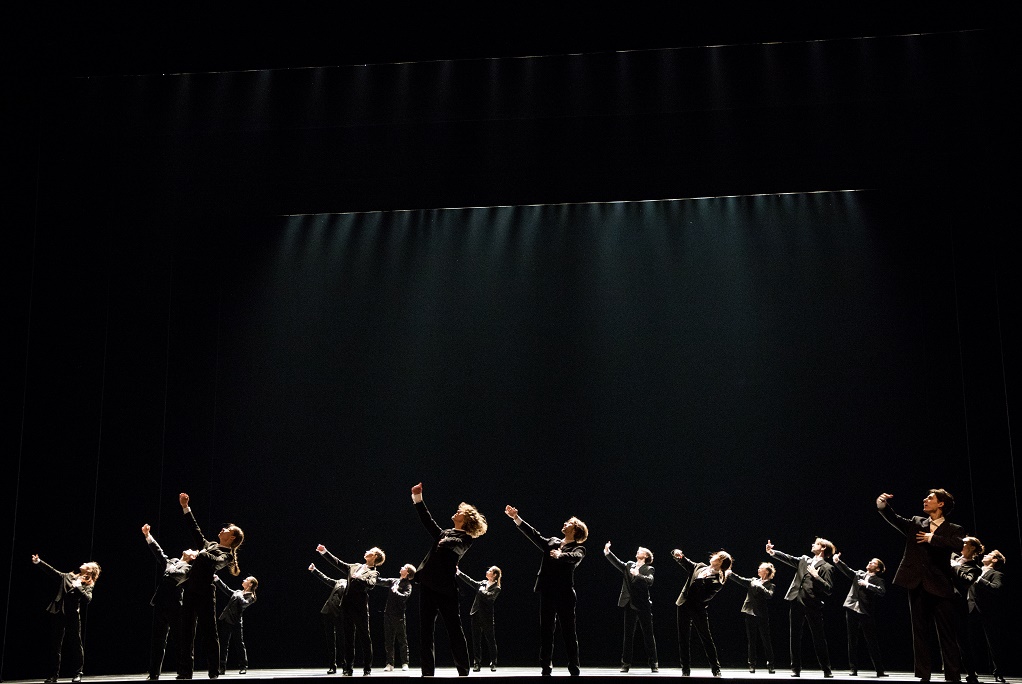 Ohad Naharin’s “Minus 16” has been performed all over the world since its premiere with the Batsheva Dance Company in The Hague in 1999. Some might call it stale or worn-out – but when it’s danced as by the Stanislavsky’s cast, it roars along magnificently. The opening solo begins during the break, and Maxim Sevagin’s mix of spastic tics, lascivious hip swings, and faked coyness lure the audience quickly back to their seats. The centerpiece of “Minus 16” uses a semi-circle of dancers and chairs and will knock your socks off. I cannot remember another performance in which this section had even remotely as much aggressive power. It stung to watch a lone dancer (Dmitry Sobolevsky) plunge to the floor over and over again. Witnessing the dancers hastily pick up their clothes from the heap of pants, jackets, shirts, and shoes in silence was slightly less bitter.
Ohad Naharin’s “Minus 16” has been performed all over the world since its premiere with the Batsheva Dance Company in The Hague in 1999. Some might call it stale or worn-out – but when it’s danced as by the Stanislavsky’s cast, it roars along magnificently. The opening solo begins during the break, and Maxim Sevagin’s mix of spastic tics, lascivious hip swings, and faked coyness lure the audience quickly back to their seats. The centerpiece of “Minus 16” uses a semi-circle of dancers and chairs and will knock your socks off. I cannot remember another performance in which this section had even remotely as much aggressive power. It stung to watch a lone dancer (Dmitry Sobolevsky) plunge to the floor over and over again. Witnessing the dancers hastily pick up their clothes from the heap of pants, jackets, shirts, and shoes in silence was slightly less bitter.
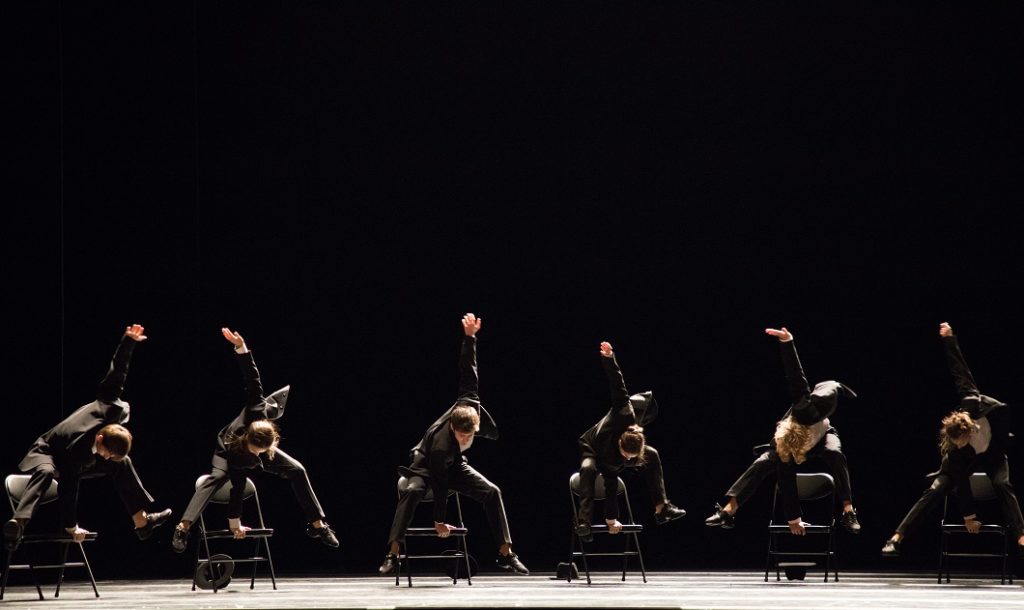 In the subsequent calm, Dina Levin and Leonid Leontiev dance a pas de deux that seems to be performed under a magnifying lens, so intensely can you feel the emotions that swirl around the room. In the freaky finale, a group of dancers swarms out into the theater to select dance partners from the audience. Usually, patrons slide a bit deeper into their chairs, hoping to be overlooked – but that wasn’t the case at all on this evening. In fact, it seemed that many of the audience members would have been happy to share the stage with this crazy bunch. Though they seemed to already be going full throttle, they grew stronger and more energetic minute by minute. The audience members who bravely joined in the dancing shared enthusiastic applause with the dancers.
In the subsequent calm, Dina Levin and Leonid Leontiev dance a pas de deux that seems to be performed under a magnifying lens, so intensely can you feel the emotions that swirl around the room. In the freaky finale, a group of dancers swarms out into the theater to select dance partners from the audience. Usually, patrons slide a bit deeper into their chairs, hoping to be overlooked – but that wasn’t the case at all on this evening. In fact, it seemed that many of the audience members would have been happy to share the stage with this crazy bunch. Though they seemed to already be going full throttle, they grew stronger and more energetic minute by minute. The audience members who bravely joined in the dancing shared enthusiastic applause with the dancers.
You might have guessed it already, if I was asked my favorite the answer would certainly be “Minus 16”.
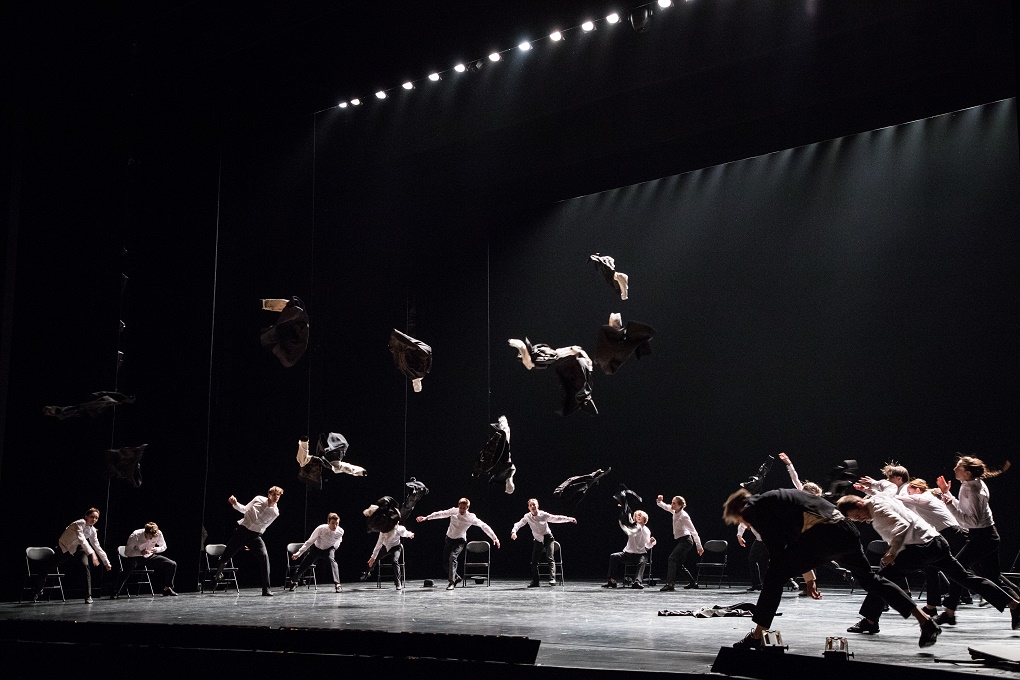
| Links: | Website of the Stanislavsky and Nemirovich-Danchenko Moscow Music Theatre | |
| Website of the Golden Mask Festival: Nominees 2019 | ||
| Photos: | (The photos show different casts from earlier performances.) | |
| 1. | Erika Mikirticheva and ensemble, “Tyll” by Alexander Ekman, Stanislavsky and Nemirovich-Danchenko Moscow Music Theatre 2019 © Svetlana Avvakum | |
| 2. | Ensemble, “Tyll” by Alexander Ekman, Stanislavsky and Nemirovich-Danchenko Moscow Music Theatre 2019 © Svetlana Avvakum | |
| 3. | Oksana Kardash and Dmitry Sobolevsky, “Tyll” by Alexander Ekman, Stanislavsky and Nemirovich-Danchenko Moscow Music Theatre 2019 © Svetlana Avvakum | |
| 4. | Natalia Somova and Evgeny Poklitar, “Lonesome George” by Marco Goecke, Stanislavsky and Nemirovich-Danchenko Moscow Music Theatre 2019 © Sergey Rodionov | |
| 5. | Innokenty Yuldashev, “Lonesome George” by Marco Goecke, Stanislavsky and Nemirovich-Danchenko Moscow Music Theatre 2019 © Karina Zhitkova | |
| 6. | Olga Sizykh and Maxim Sevagin, “Lonesome George” by Marco Goecke, Stanislavsky and Nemirovich-Danchenko Moscow Music Theatre 2019 © Karina Zhitkova | |
| 7. | Ensemble, “Minus 16” by Ohad Naharin, Stanislavsky and Nemirovich-Danchenko Moscow Music Theatre 2019 © Karina Zhitkova | |
| 8. | Ensemble, “Minus 16” by Ohad Naharin, Stanislavsky and Nemirovich-Danchenko Moscow Music Theatre 2019 © Karina Zhitkova | |
| 9. | Ensemble, “Minus 16” by Ohad Naharin, Stanislavsky and Nemirovich-Danchenko Moscow Music Theatre 2019 © Karina Zhitkova | |
| Editing: | Jake Stepansky |
